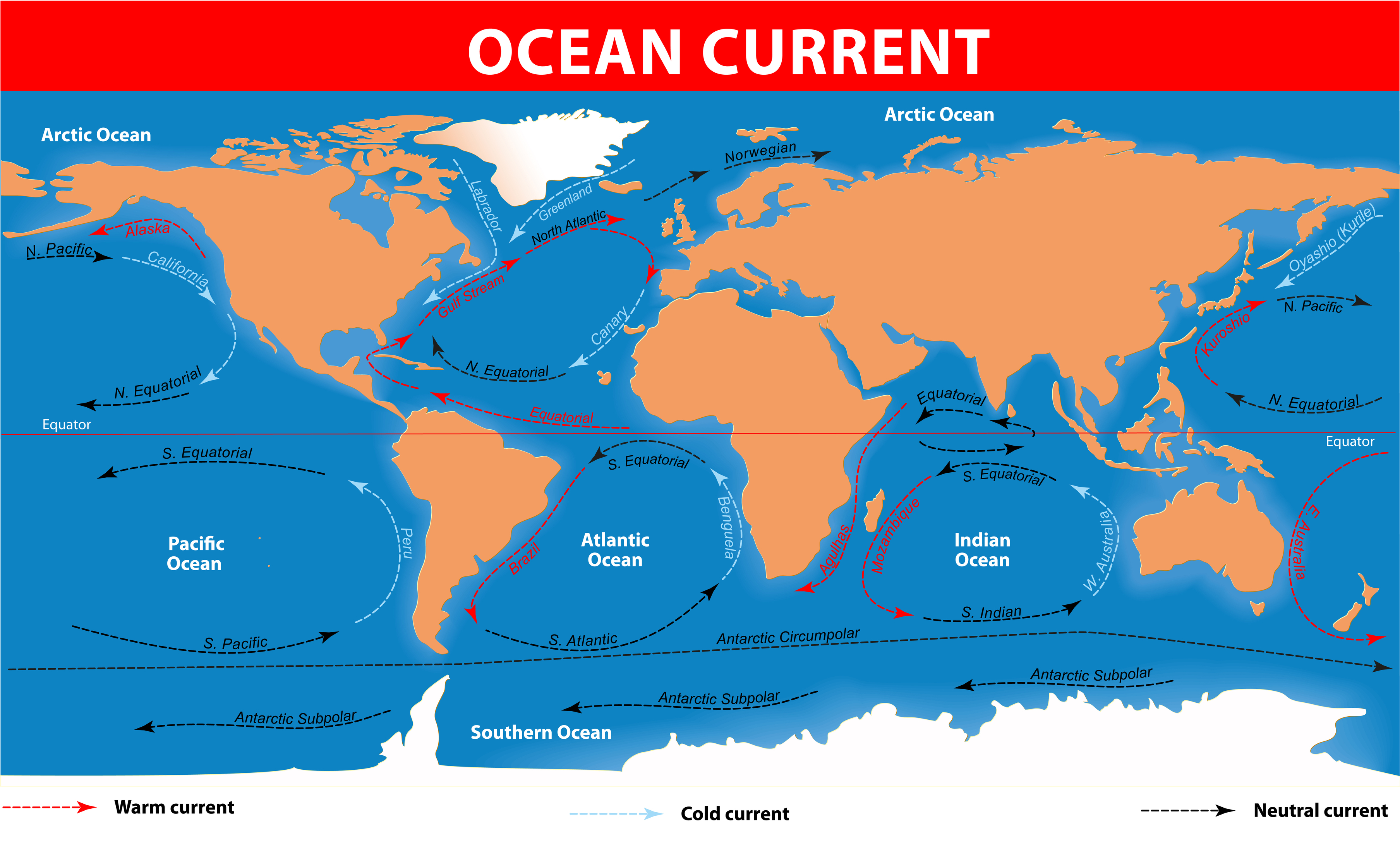- It is the measurement of available heat energy in a system.
- It is a measure of hotness and coldness of the body.
- The lower levels of the atmosphere are heated by conduction.
- The earth's surface is heated during day time after receiving solar radiation.
- The upper levels of the earth get heated by convection.
The air coming in contact with the warmer
surface of the earth gets heated and expands in volume. The warmer air
rose up and forms vertical circulation of air. This mechanism transports
heat from the ground surface to the atmosphere, thus helps in heating
up of the atmosphere.
Factors controlling the distribution of temperature:
• Latitude:
In general, average temperature decreases form the equator towards the
poles because the sun rays become more and more oblique poleward.
• Altitude:
the temperature decreases with increasing height from the earth's
surface at an average rate of 6.5 °C per 1000 m. The lower layer of air
contains more vapour hence it absorbs more heat radiated from the
earth's surface than the upper air layers.
 • Mountain Ranges:
In certain areas of the world the existence of high ranges of mountains
acts as formidable barrier to the free circulation of air in the lower
reaches of the atmosphere. The Himalayas, for example, prevents the
monsoon conditions extending further north into the interior of Asia and
prevents the extremely cold anticyclonic winter conditions in Central
Asia from penetrating Indian subcontinent.
• Mountain Ranges:
In certain areas of the world the existence of high ranges of mountains
acts as formidable barrier to the free circulation of air in the lower
reaches of the atmosphere. The Himalayas, for example, prevents the
monsoon conditions extending further north into the interior of Asia and
prevents the extremely cold anticyclonic winter conditions in Central
Asia from penetrating Indian subcontinent.
• Distance from the Sea: The
Sea heats up and cools down much more slowly than theland. The effects
of this phenomenon are more noticeable in the temperate latitudes where
the warming effect of the sea particularly affects coastal regions in
winter. In general, the sea has a moderating effect on the temperatures
of the coastal areas throughout the year. On the other hand, regions
deep within the interior of land masses experience extreme temperatures.
This phenomenon is known as continentality.
 • Ocean Currents: Ocean
currents influence the temperature of the coastal regions particularly
where onshore winds carry the influence of warm currents towards coastal
regions in winter. Cold currents have a cooling effect on the nearby
coasts but have a lesser effect than warm currents due to the fact that
they often flow below offshore winds.
• Ocean Currents: Ocean
currents influence the temperature of the coastal regions particularly
where onshore winds carry the influence of warm currents towards coastal
regions in winter. Cold currents have a cooling effect on the nearby
coasts but have a lesser effect than warm currents due to the fact that
they often flow below offshore winds.
• Clouds: The
presence or absence of clouds in the atmosphere over different regions
of the earth's surface has a significant bearing on the temperature of
the regions. Clouds have the effect of reducing the amount both of
insolation, which reaches the surface of the earth and of outgoing
radiation from the earth's surface. As a result, tropical rain forests
with dense cloud cover have very little range of temperature, where as,
the hot deserts, which havecomparatively less cloud cover, have both
high diurnal and annual temperature ranges.
• Local Weather: Local
weather comprises different types of storms, cloudiness, precipitation
and other weather conditions. In the equatorial regions, despite the
vertical rays of the Sun, large amount of cloudiness obstructs the solar
radiation from reaching the earth surface. It is due to the clear skythat
near the Tropic of Cancer and the Tropic of Capricorn the amount of
solar radiation incident on the earth exceeds that reaching the
equatorial regions. Thus, in the subtropical high pressure belt the
surface water temperature in the oceans is a little higher. Besides, the
incidence of daily afternoon rains in the equatorial regions does not
allow the temperatures to rise further, whereas the extremely dry
weather and cloudless skies prove helpful in raising the temperatures in
the subtropical regions. In the same way in regions of stormy weather
the ocean water temperatures are relatively lower.



Post a Comment
Post a Comment